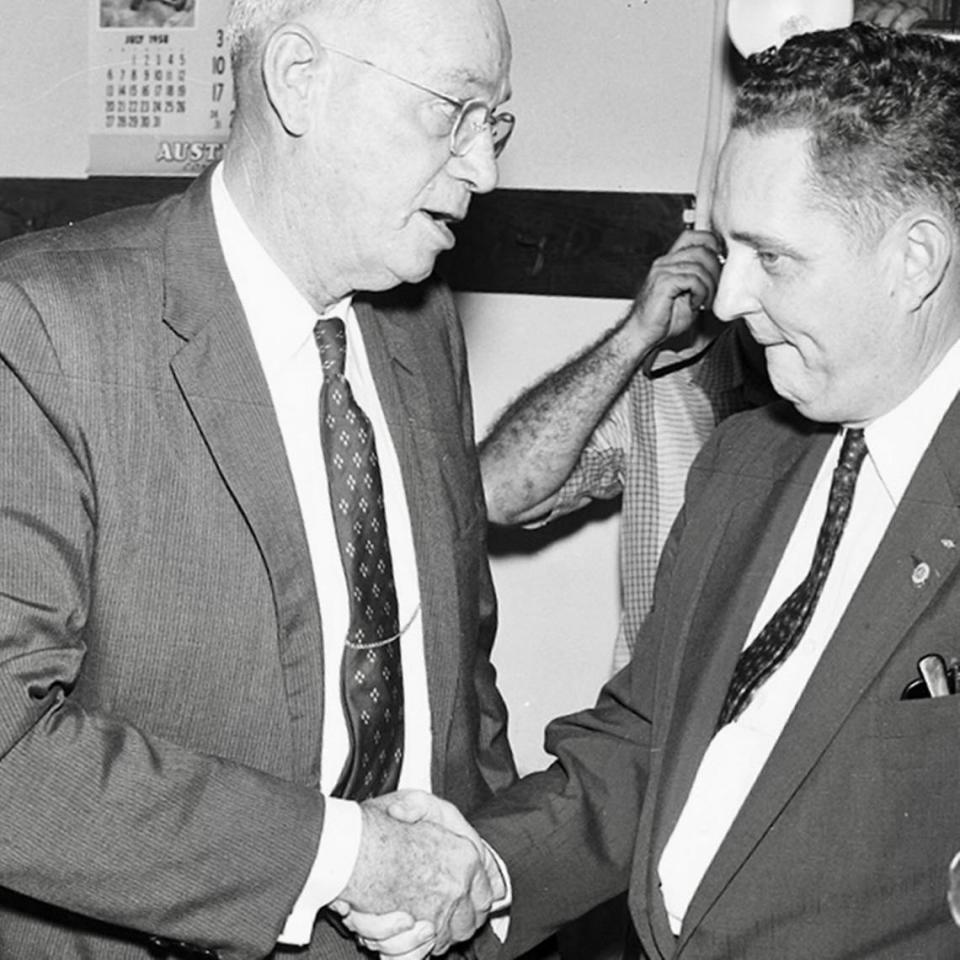When Fort Worth and Tarrant County flew an electric U.S. flag and started a flap | Opinion
The year was 1954, and Fort Worth leaders came up with a new way to stand up for America.
What our city really needed, they decided, was a really big electric American flag.
That’s how Tarrant County commissioners and the Fort Worth Jaycees collaborated for a garish decoration that became a statewide laughingstock.
From the Fourth of July in 1954 until it was lowered for junk Aug. 22, 1959, the historic county courthouse flew a 13-foot-long electric Old Glory night and day with 776 red, white and blue light bulbs.
The entire dome was also outlined in bright red, white and gold neon.
So basically, our courthouse looked less Texas and more Vegas.
In a nation that feared dirty Commies around every corner — and where white leaders also feared federal court-ordered desegregation — the Jaycees raised $2,500 for the flag.
County Judge Gus Brown loved the idea.
That is, as long as somebody else paid for it.
But commissioners quickly learned that it cost $100 a month or more in parts and labor for workers to keep climbing the dome, fixing the neon and replacing burned-out lightbulbs to keep the Stars and Stripes glowing.
Patriotic organizations were already outraged.
They called it fake. It was disrespectful, they said, to leave a flag out at night or in the rain.
Less than a year after Jaycees president Charles Ringler of Leonards Department Store flipped a switch to light the electric Stars and Stripes — which even had fake ripples as if waved in the wind — citizens started a flap.
Reporter-turned-publicist Irv Farman and friend Gene Miller delivered commissioners a petition saying the flag “leaves the people of Tarrant County open to ridicule and contempt.”
A state representative from Austin later called it an “abomination.”
A schoolteacher wrote the Star-Telegram saying that the flag “reflects extremely poor taste.”
But Brown and commissioners said any decision on removal was up to the Jaycees.
In the 1957 satirical Gridiron Show, reporters put on skits poking fun at local and state lawmakers. The flag earned its own number:
“It’s a tin-can flag/ It’s a galvanized flag/ And not even a breeze makes it wave/ It’s the symbol of the Jaycees’ love/ For Mother and home and the brave.”

By 1959, newly elected County Judge Marvin Simpson and commissioners grumbled about the upkeep.
The Jaycees had said the flag was a gift. But they wouldn’t pay for maintenance, or removal.
Commissioners faced a new expense to rewire the flag from 48 to 50 white lights, adding stars for Alaska and Hawaii.
In a 1979 interview, Ringler said the Jaycees had changed leadership and didn’t consider the flag a big deal: “Finally, we said to heck with it.”
The Star-Telegram editorial page called for removing both the lighted flag and the gaudy neon, leaving the cupola “to the clock and the pigeons.”
Finally, on Aug. 22, 1959, the lights went out and the 1,250-pound flag came down.
Commissioners paid the maker, Dick Mitchell of Texas Neon Sign Manufacturing, $850 to lower it.
Instead of giving it the proper disposal under U.S. flag law, he told a reporter later, “We just hired an old man to come and carry it off to the junkyard.”
As recently as the 1980s, readers argued in the Star-Telegram about whether the flag was lighted with bulbs or neon tubes, and sometimes about whether it existed at all.
Even today, one commonly misidentified courthouse photo has a caption saying the wind downtown blew so hard, “the courthouse flag stood out straight.”
For five years, Fort Worth’s patriotism was electric.

 Yahoo Sports
Yahoo Sports 
